Best for an indulgent foodie break …
No 1 Bruton, Somerset
What’s it like?
A joint venture by a cracking little hotel and a special restaurant opened in late 2019 in the small-but-happening town of Bruton. The Grade-II listed building on a medieval plot at 1 High Street is a mishmash of a Georgian townhouse and converted 15th-century forge and cottages
There are three types of room, 12 in total: five colourful bedrooms with William Morris & Pierre Frey wallpaper in the higgledy-piggledy upper floors of the townhouse; four in the forge at the back, which were under construction when I visited; and three cottages in the courtyard, where I stayed. Mine had a small lounge with a woodburner and a narrow staircase leading up to the rustic whitewashed bedroom, with brass bed, exposed beams, terracotta-tiled floors and Morris textiles. The downstairs felt disconnected though: cottage 2 or 3, where lounge and bedroom are on the same level, feel more spacious.
What about breakfast and dinner?
Osip restaurant is run by Merlin Labron-Johnson in a former ironmonger’s shop, which still has its huge medieval fireplace. The owner-chef won a Michelin star at the age of just 24 at the Portland in London, and on the evidence of the brilliantly creative five-course tasting menu I had, it was no surprise to learn he picked up another one here in January.
The menu is big on provenance, with food sourced from local farmers, hunters and gatherers. It kicked off with a cup of “tea”: an amuse-bouche of duck broth and leek oil laced with lapsang souchong was like distilled umami. The pumpkin soup with brown butter and roasted chestnuts was so comforting it melted my heart; the smoked eel in creamy potato and a hint of caviar was an explosion of flavours.
Any breakfast would struggle to follow such a feast, and so it proved. With the honourable exception of the cold, silky rice pudding, breakfast didn’t work. Serving large, boiled duck eggs was a novel idea – but why a cold one in winter, and without toast? And the coffee was boring old filter, and tepid too. (Looking at the website, the menu has been enhanced since I was there.)
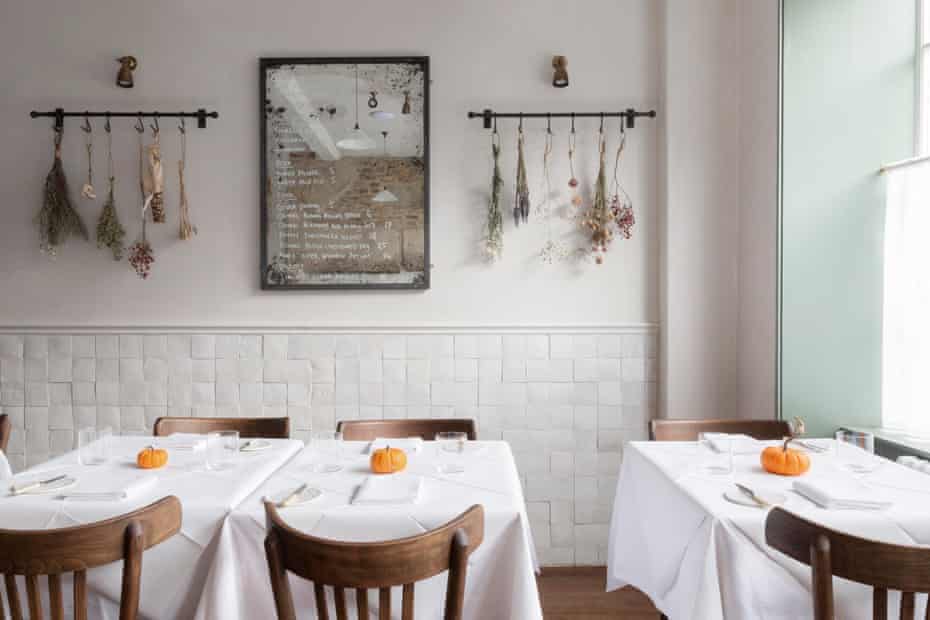
What’s on the doorstep?
Glastonbury, Longleat, Frome, the Somerset Levels and Quantock Hills are nearby, but Brunton itself has a pair of must-see arty/foodie attractions. The arrivalof the Hauser & Wirth Somerset gallery in 2014 was a gamechanger for the area, turning it into an A-list art destination – and a catalyst for other openings, including the hotel and restaurant reviewed here. Its prairie garden is an art installation in itself. Along the same lines – wealthy foreign family appears from nowhere and splashes millions to create something quite wonderful – the Newt in Somerset, 10 minutes out of town, is a restored Georgian manor house built from sandstone. It is now a luxury hotel amid woodland and magnificent gardens, though entry is an eyewatering £30 – double the price of Kew Gardens!
Both places have fabulous restaurants. I only had time to try the Garden Café at the Newt (where the food was impressive as the views over the pretty kitchen gardens and orchards below) but when I saw the quality of the produce in the Hauser & Wirth restaurant kitchen, I kicked myself for not staying in Bruton longer. Its huge cuts of ageing marbled beef hung in glass cabinets were like edible works of art.
How much?
Rooms start at £150 B&B in the forge, £160 in the townhouse, and £185 for the cottages. Prices in the restaurant have gone up since it won a Michelin star – the tasting menu is £69, three-course lunch £45.
Verdict
A cool hotel full of character and history and what is already a destination restaurant – a winning combination.
numberonebruton.com, osiprestaurant.com
Gavin McOwan
Best for the bard …
Baraset Barn hotel, Stratford-upon-Avon
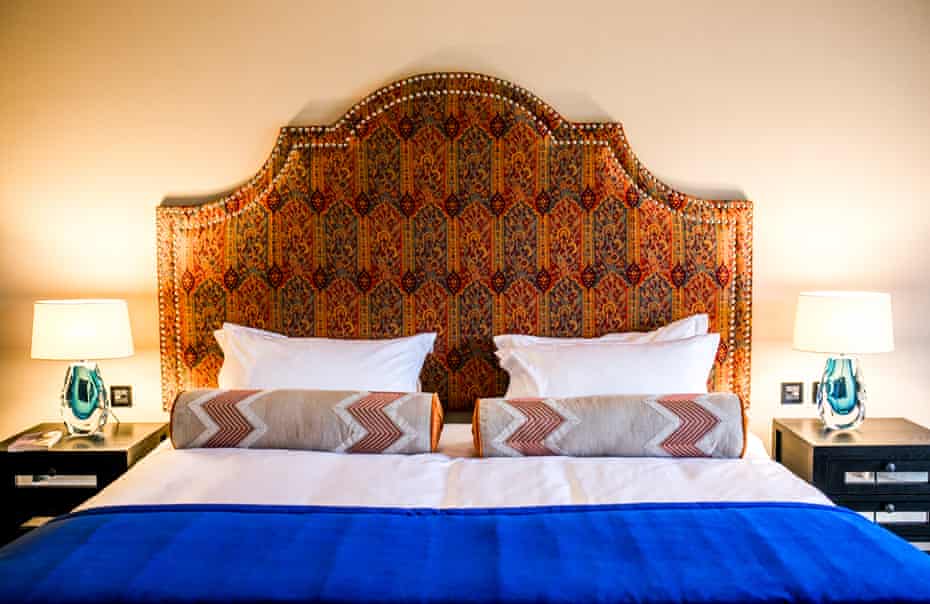
What’s it like?
The term “barn-like” usually evokes a large, echoey, unwelcoming space, but there are some handsome barns around, such as this 200-year-old example a couple of miles from Stratford. A restaurant since the early noughties, it is now part of Warwickshire’s Lovely Pubs Company and oozes barn-chic – the high roof and ancient rafters contrasting with elegant upholstered chairs, big mirrors and lots of sleek metal. A new, two-storey, 16-bedroom annexe looks like a barn conversion, but is a new building, right next to a field of sheep.
Rooms all have a terrace or balcony and big statement headboards above beds so huge we feel we could be sleeping in different postcodes. I like the controllable heating/aircon, and the smart spacious bathroom, with white subway tiles, matt black fittings and a walk-in shower big enough to sleep in. The “honesty fridge” has wine, beer and prosecco, and a little bottle of fresh milk for your tea.
What about breakfast and dinner?
The continental breakfast included in the room rate offers decent granolas, fruit compotes, yoghurt, pastries and toast, plus regular tea and coffee. Extras such as barista coffees, doorstep bacon or sausage sandwiches, smoked salmon and scrambled egg etc, ramp up the cost considerably.
In the evening, we forgo a drink (cocktails from £6.95) in the conservatory bar and cut straight to dinner. The Barn serves modern European cuisine, and I appreciate the sort of “modern” that includes veggie starters and mains I might choose even if I weren’t avoiding meat. Pea, edamame and mint fritters (£8.95) are pepped up by harissa and blobs of labneh, and prettified by tiny rolls of charred yellow courgette. In a pasta special of tortelloni (£14.95), the sweet pumpkin filling is offset by intense confit tomatoes and crisp fried sage leaves. For carnivores there are steaks from nearby Herefordshire, and sophisticated twists on classic lamb, duck and chicken dishes. On a cold night the choice of hot puddings – sticky toffee, panettone bread and butter, crumble – is tempting, but we only have room for a shared cheese board, which includes Welsh Perl Wen and Bosworth Ash.
It’s worth making time for Sunday lunch at canalside sister pub the Boot Inn, a few miles away in Lapworth, right on Warwickshire’s famous flight of 12 locks. Its roasts go down well after you’ve tramped a few miles of pretty towpath.
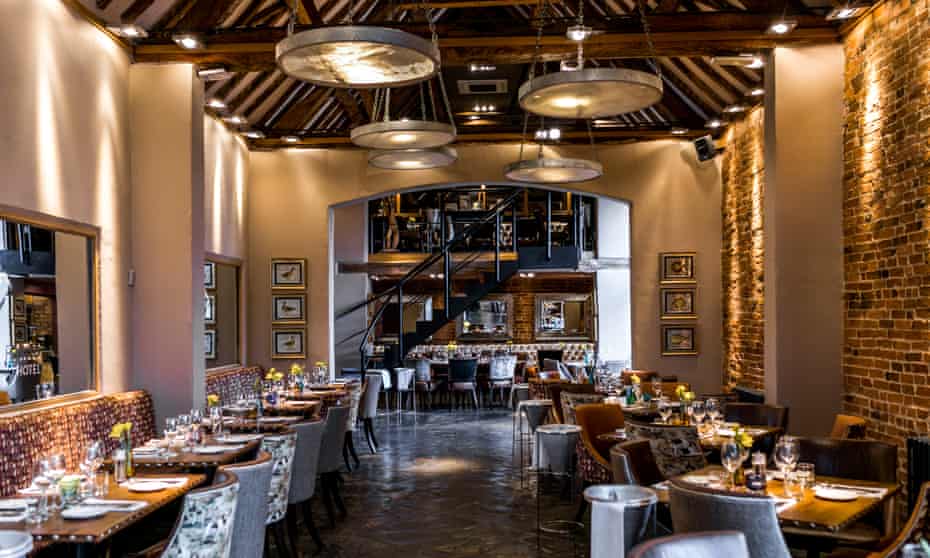
What’s on the doorstep?
Stratford and its Shakespeare attractions is just over two miles away – a half-hourly bus (no 15) runs until after 11pm Mon-Sat. This summer sees productions in the new riverside Garden Theatre (from 13 July). Opening dates for other attractions vary: Shakespeare’s Schoolroom and Guildhall from 28 June, Shakespeare’s birthplace from 1 August.
The Barn is on the edge of the prosperous village of Alveston, once home to JB Priestley, on a bend in the Avon with picnic tables by the river. Warwick is about nine miles in the other direction and served by the same bus, which also runs close to the National Trust’s Charlecote Park (gardens, deer park, plant shop and cafe only for now, house opening tbc, advance booking only).
How much?
Doubles from £120 B&B.
Verdict
A trip to Shakespeare country often means staying somewhere half-timbered and Tudor-feeling, but the Barn offers an escape from the coach tours and Bard groupies, while still being handy for all the culture.
barasetbarn.co.uk
Liz Boulter
Best for an affordable London weekend …
Stow-Away, Waterloo
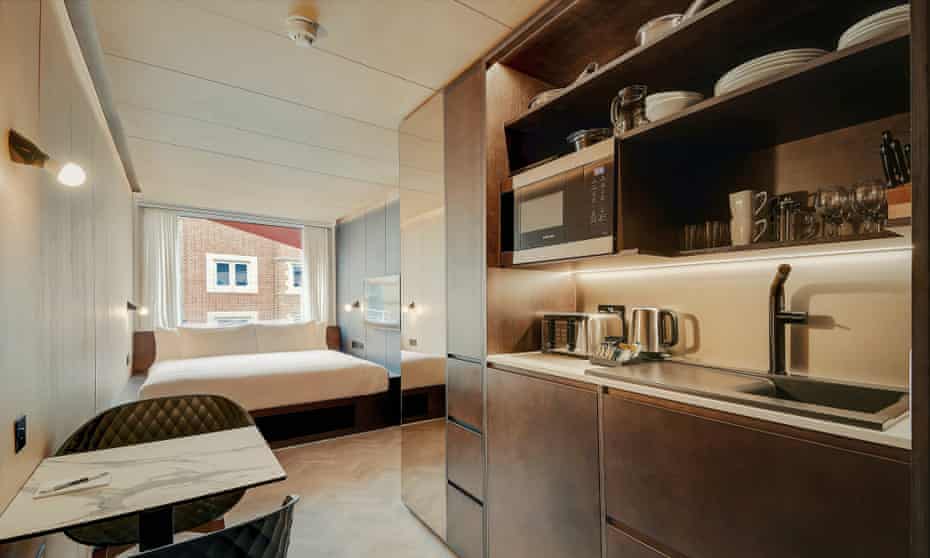
What’s it like?
An eye-catching apart-hotel made from a stack of 25 shipping containers – five wide by five high – on a quiet street behind Waterloo station. Stow-Away bucks the trend among apart-hotels to foster a sociable, creative vibe: here there’s no reception or communal space. You download the app and receive a code on your phone to access your room via outdoor metal stairs and gangways from which there are views over the railway and London Eye beyond. The accommodation is compact – the bed fills the width of the room – but windows have been cut into the street-facing end of the containers so there’s no sense of claustrophobia. And they’ve squeezed in a miniature kitchen area with microwave, fridge, small hob and sink, plus a bathroom.
What about breakfast and dinner?
Breakfast is not provided but there are cafes on Lower Marsh Street, including Four Corners cafe. The ground-floor restaurant is run by Unwined, a wine bar and shop that started out in Tooting Market in 2015. Pre-Covid, resident chefs were hosted for three month-stints, with Saturday night pop-ups to showcase less-established chefs. The night we stayed it was Rajiv’s Kitchen – the Nepalese chef’s menu included momos (dumplings), thalis and delicious coconut panna cotta. The residencies and pop-ups are on hold at the moment. For now, Klose & Soan are providing the food, offering a Mediterranean inspired menu – a white bean dip for example, followed by squid ink tagliatelle with Cornish crab.
Unwined’s ethos is to shine a light on lesser-known regions and winemakers so its wine list has unusual picks, such as Chateau Mercian, a dry-white from Japan, and a Turkish merlot. Staff are wine specialists and can guide diners through the list, and all wines are on sale (minus the £15 restaurant mark-up). It hopes to resume its weekly tastings from late summer.
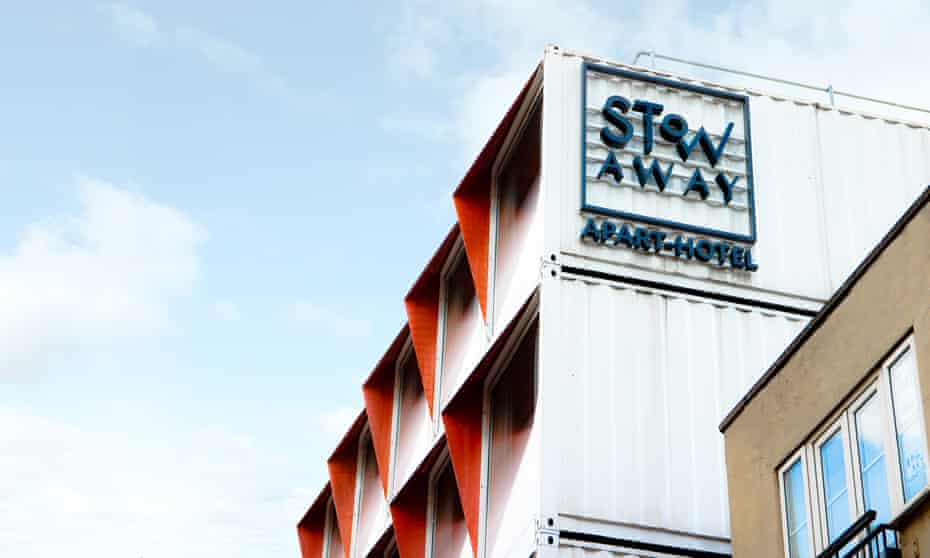
What’s on the doorstep?
Stow-Away is on Lower Marsh Street, which has been home to a street market since the mid-19th century. There are still food stalls here Monday-Friday. Turn left out of the hotel and you’ll come to The Vaults, an alternative arts venue in railway arches under Waterloo station. After months of closure, a new socially-distanced show is opening on 18 May (until 30 May). Dante’s In-Furlough is an interactive performance that invites the audience to lie, sin and cheat their way to see the devil get hitched.
Behind Stow-Away is the House of Vans skateboarding and events venue, which my son (then 10) thought was cool. Continue up Lower Marsh Street and you hit the Old Vic theatre – which announced its Back Together summer season this week, including Harold Pinter’s The Dumb Waiter starring Daniel Mays and David Thewlis (July 7-10). Turn right out of the hotel and it’s a 10-minute walk to the Imperial War Museum, reopening on 19 May, with expanded second word war and Holocaust galleries. It’s also a 10-minute walk through the Leake Street graffiti tunnel, founded by Banksy, to the river where the South Bank will be running its Summer Reunion programme of events over the summer.
How much?
£99 a night.
Value for money?
Yes. The price reflects the fact thatit’s good base, rather than a pampering hotel experience.
Verdict
Not one if you want shopping and sightseeing on the doorstep (though you can walk or hop on a bus to Covent Garden and the West End) but a good option if you seek something slightly edgier without the hipster overload of east London.
stow-away.co.uk
Isabel Choat
Best for coastal walks …
The Ship Inn, Dunwich, Suffolk
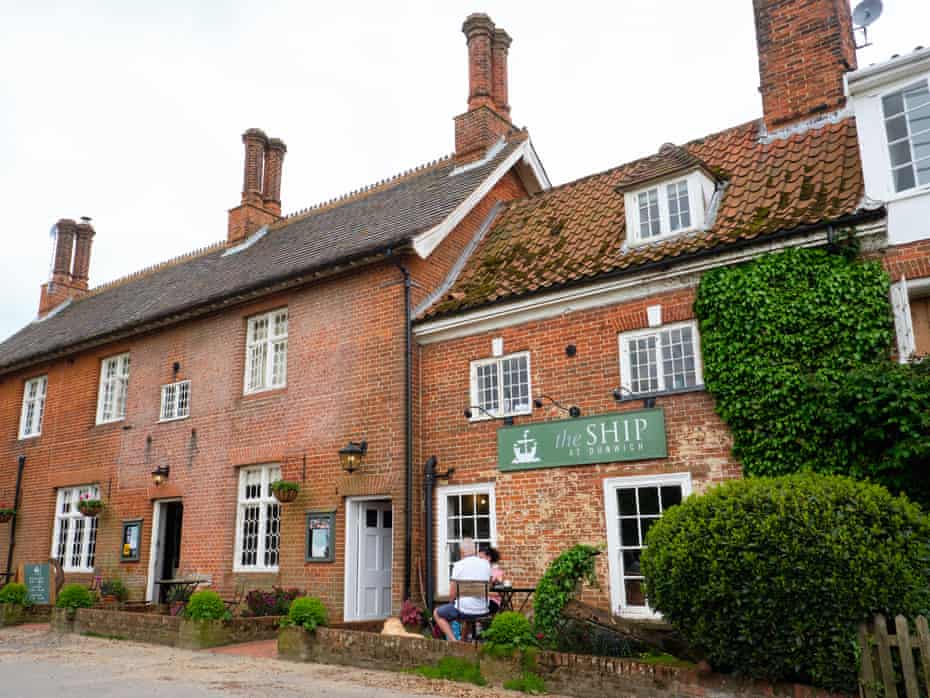
What’s it like?
In medieval times Dunwich was an important port almost as big as London. That was before its harbour, pubs, churches and fine merchants’ houses were gradually washed away by North Sea storms. Now just one main street, one church and a ruined monastery survive. But at the eastern end of that street, a stone’s throw from the long shingle beach, stands the Ship, in a low, 17th-century redbrick building, with ornamental iron windows that glow invitingly as you approach after a walk on scenic Dunwich Heath. It has been an inn since the early 1800s and tales abound of smugglers, secret passages and a “grey lady” who walks through walls on the attic floor.
It’s no grim relic, though: the Chestnut Group added it to its small East Anglian chain in 2019 and refurbished throughout. And while downstairs still feels like a historic pub – red-tiled floors, log fire, built-in wooden benches, loads of dogs – the bedrooms have gone from basic to cosy. The cream and pale taupe colour scheme will win no design prizes, but serene rather than startling can sometimes work better. We have a double brass bedstead (there are kings in the handful of “best” rooms and suites), a shiny new bathroom with punchy shower, a statement enamel kettle, and – ooh! – a small decanter of sherry. Rooms at the front have views of the sea and marshes that can be enjoyed in comfort thanks to secondary glazing on those pretty period windows.
What about breakfast and dinner?
We spend the late afternoon by the fire in the bar, but choose to move to the conservatory to order from the short menu of polished pub classics. The signature snack is homemade scotch eggs in three varieties: pork and black pudding, smoked salmon and horseradish, and spicy bean. The eggs all come with a poky relish for contrast – sharp pickled cucumbers in the case of my salmon one.
Main course portions are huge. Those of small or even normal appetites should probably order a child’s roast dinner to avoid being faced with a pile of food that it’s hard to even make a dent in. It’s a shame as the food is delicious: tasty free range pork from nearby Blythburgh, loads of crackling, five vegetables plus roasties, mash and a yorkshire pudding bigger than a baby’s head. Husband can usually be relied on to help out with large portions, but his generous fish pie leaves him hors de combat. I can’t bring myself to order treacle tart or mincemeat crumble after my sorry main course effort.
Breakfast is at the front of the pub, in smaller rooms lined with early 20th-century photos showing a long-gone cliff path, and the gradual swallowing of All Saints Church by the foamy brine. Lots of choices beyond full English – omelette for me, kippers for him – after excellent yoghurt with berries.
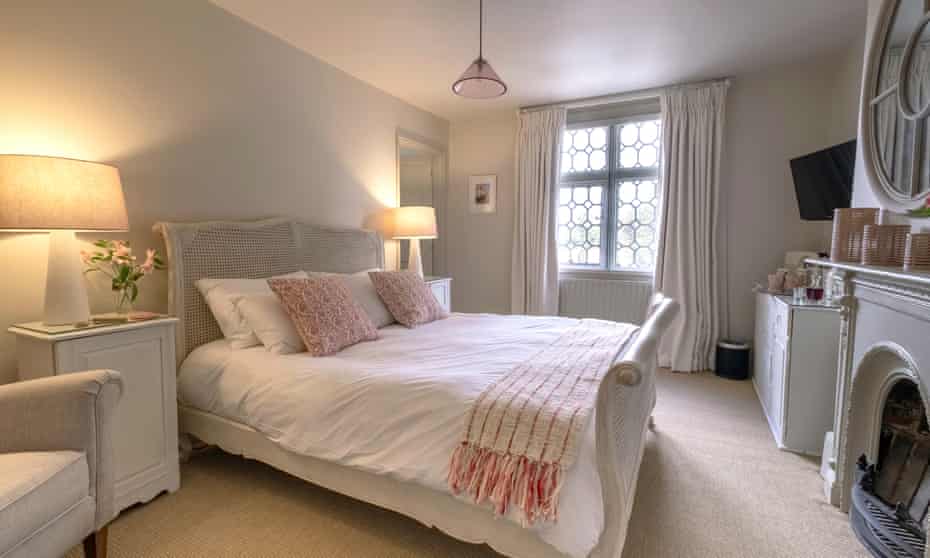
What’s on the doorstep?
The huge, National Trust-owned beach, mainly. A perfect five-mile round trip walk heads south along the shingle (if the tide is out, you can walk on the firmer sand) to the NT Coastguard Cottages (shop and tearoom open till 5pm, 3pm in winter) then back across lovely Dunwich Heath, with sea views from its heathery expanses. Popular Walberswick lies a few miles in the other direction. The idyllic seaside town of Southwold is a six-mile walk, but there’s no bus back so it requires stamina and plenty of daylight. The museum a few doors up from the Ship is reopening on 17 May, telling the story of the vanished medieval port.
How much?
Doubles from £115 B&B, fancier rooms with sea views up to £215 a night. Two-course dinner from £20.
Verdict
A welcoming and (mostly) affordable bolthole for seaside lovers.
shipatdunwich.co.uk
LB
Best for a history lesson …
New Lanark Mill Hotel, Lanarkshire
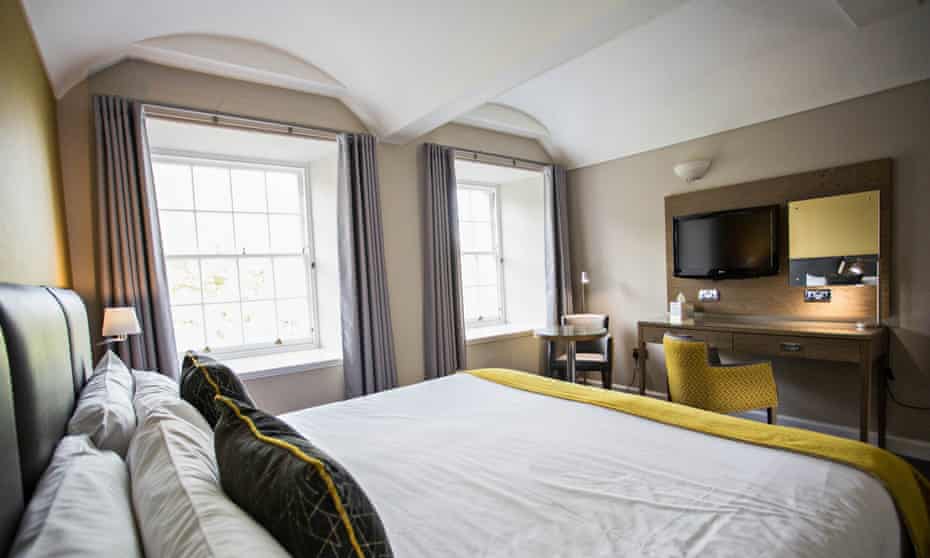
What’s it like?
The hotel is part of New Lanark, a former cotton mill and model village, and a Unesco world heritage site since 2001. This year is the 250th anniversary of the birth of Welshman Robert Owen, a pioneering social reformer who bought New Lanark in 1799. After taking it over, he began transforming it into a place that, by the standards of its day, was something approaching a socialist utopia compared to the “dark satanic mills” that plagued Britain at the time.
In the former Mill No 1, the hotel has bought into Owen’s no-nonsense ethos with an interior that has a utilitarian feel. My room was one of two suites (whose existence is, admittedly, somewhat less than egalitarian). This afforded me space, a view of several village buildings, and a settee on which to sprawl and look up at the intriguing corrugated metalwork in the ceiling – once part of the mill.
On a smaller scale, there are self-catering apartments and the Wee Row hostel (re-opening 2022), a section of converted terrace. All of the latter’s 18 rooms have a river view and, reflecting the bijou nature of the mill workers’ housing, the largest ones sleep just four, so there are no dorms.
What about breakfast and dinner?
Breakfast in the hotel restaurant proved as tasty as it was inventive. If there were a nation whose staple morning refection was chickpea pancake with hummus and salsa I’d be off there in a jiffy. For dinner in the Mill One restaurant I plumped for a mushroom and truffle bruschetta starter. The vegan options of pumpkin and chickpea chilli followed by a selection of sorbets, while not exactly exciting, were perfectly pleasant and served by very friendly staff.

What’s on the doorstep?
Though the cotton mills closed in 1968, the village was saved from dereliction and today hosts a range of attractions. My visit kicked off with one of the site’s occasional son et lumière shows, an enjoyably arch narration of the New Lanark story.
I also visited a photographic exhibition; joined a lively tour of the site led by a knowledgable guide; had a nose around Robert Owen’s house (posh for its day as it contained “more rooms than people”); and looked at what was Britain’s first infants’ school, opened in 1817. Now there’s also a special interactive feature called Tenement through Time. Set in the sole tenement block whose interior has remained untouched, the exhibition dives into the nitty-gritty of home life experienced by the village’s residents from 1881 to 1971.
After my day on site, I took a walk upstream along a short section of the 40-mile Clyde Walkway footpath. Passing through woodland I came to the Falls of Clyde, that powered New Lanark’s mills. JMW Turner sketched the falls in 1834 and they’re still a delight, tumbling down through the valley.
Covid
Under Scotland’s roadmap, tourist accommodation opened from 26 April but the New Lanark opens on 17 May. The swimming pool reopens on 17 May too (sessions must be booked) but the gym and sauna are closed until July. The New Lanark visitor attraction reopens on 28 May.
How much?
Doubles from £85 B&B, suite from £135, self-catering from £115 (sleeps 4, two- night minimum).
Verdict
Though not fancy, the hotel is richly rewarding in the evenings when a hush falls on the village and it slips back into the past.
newlanarkhotel.co.uk
Dixe Wills
All accommodation was provided by the hotels





